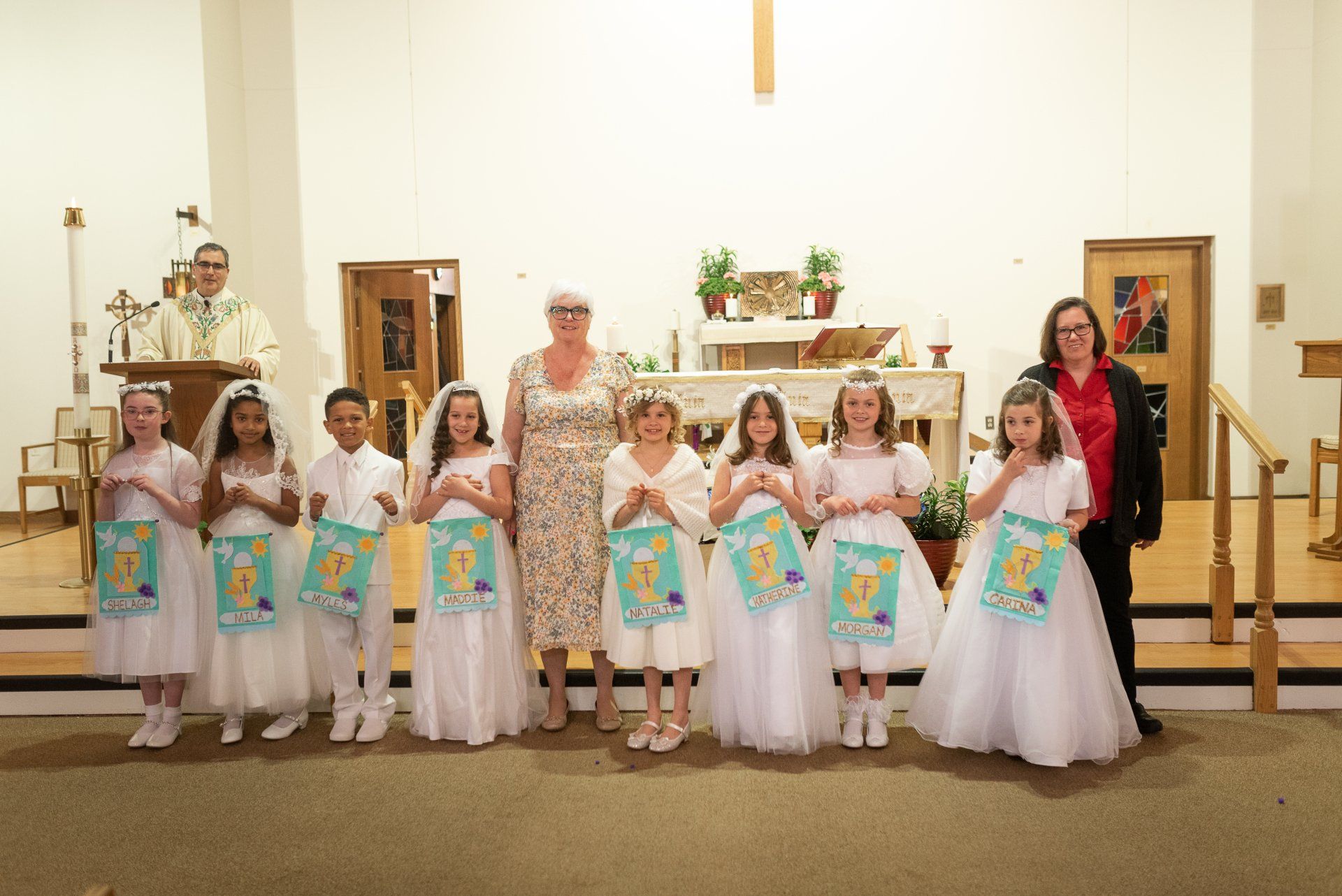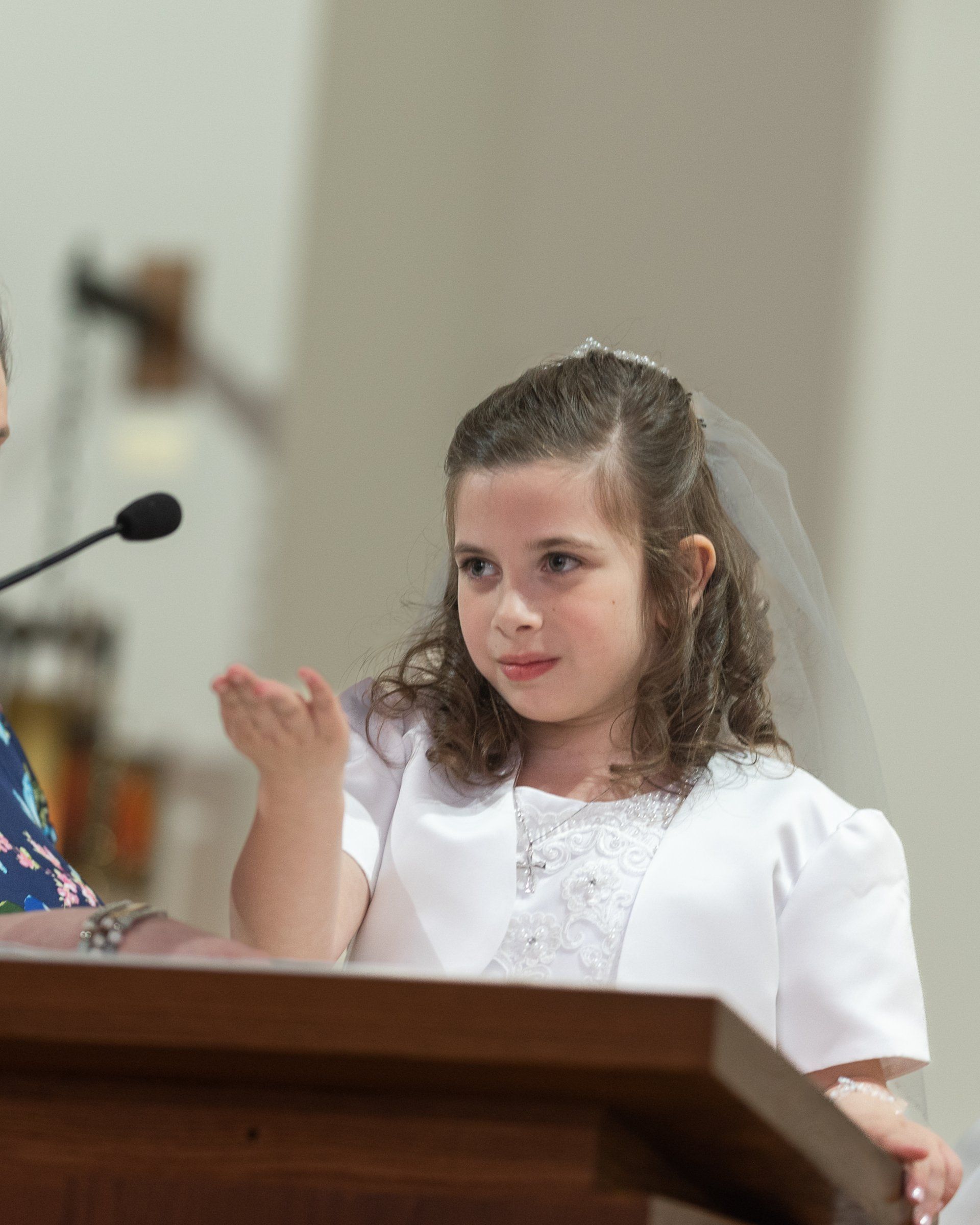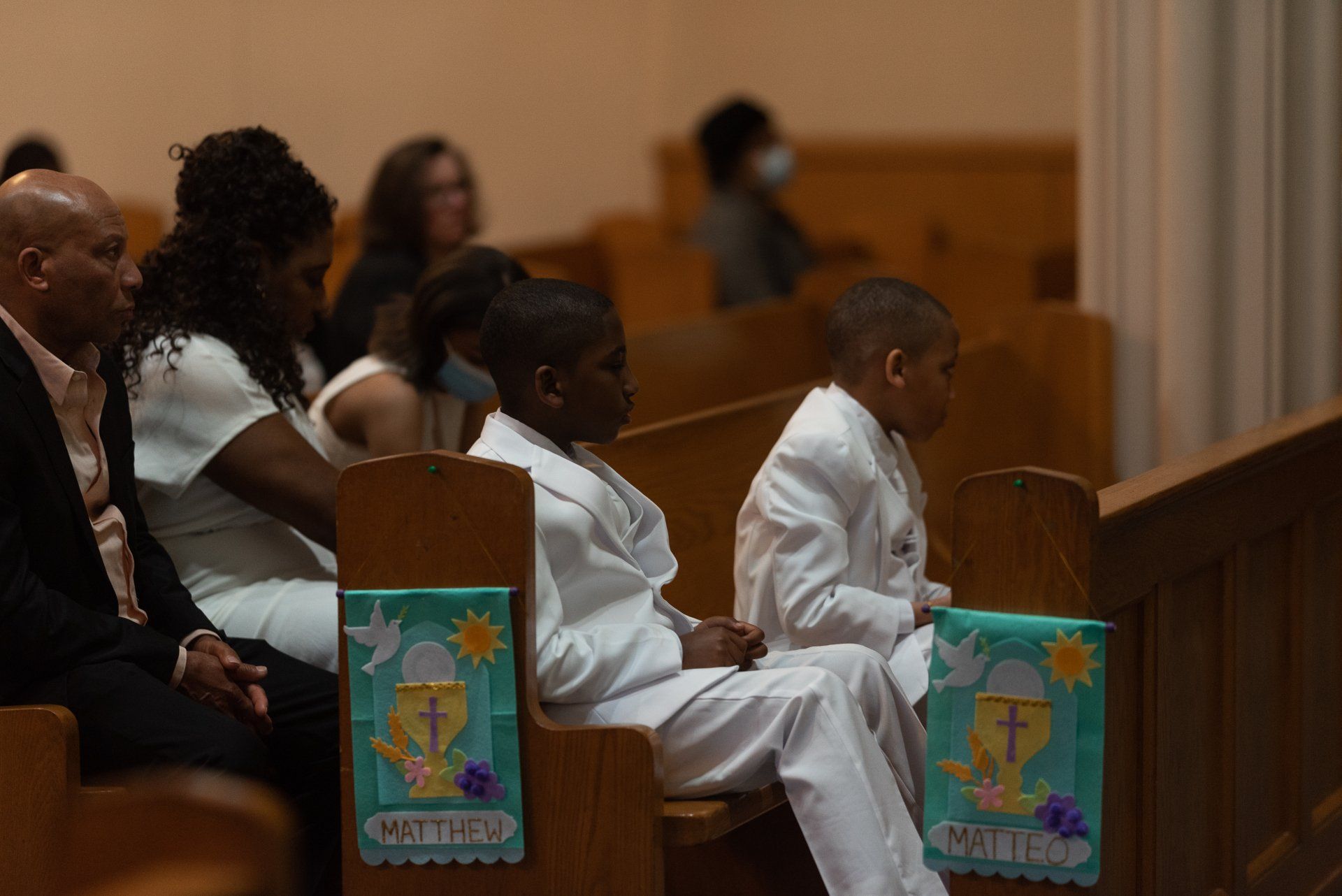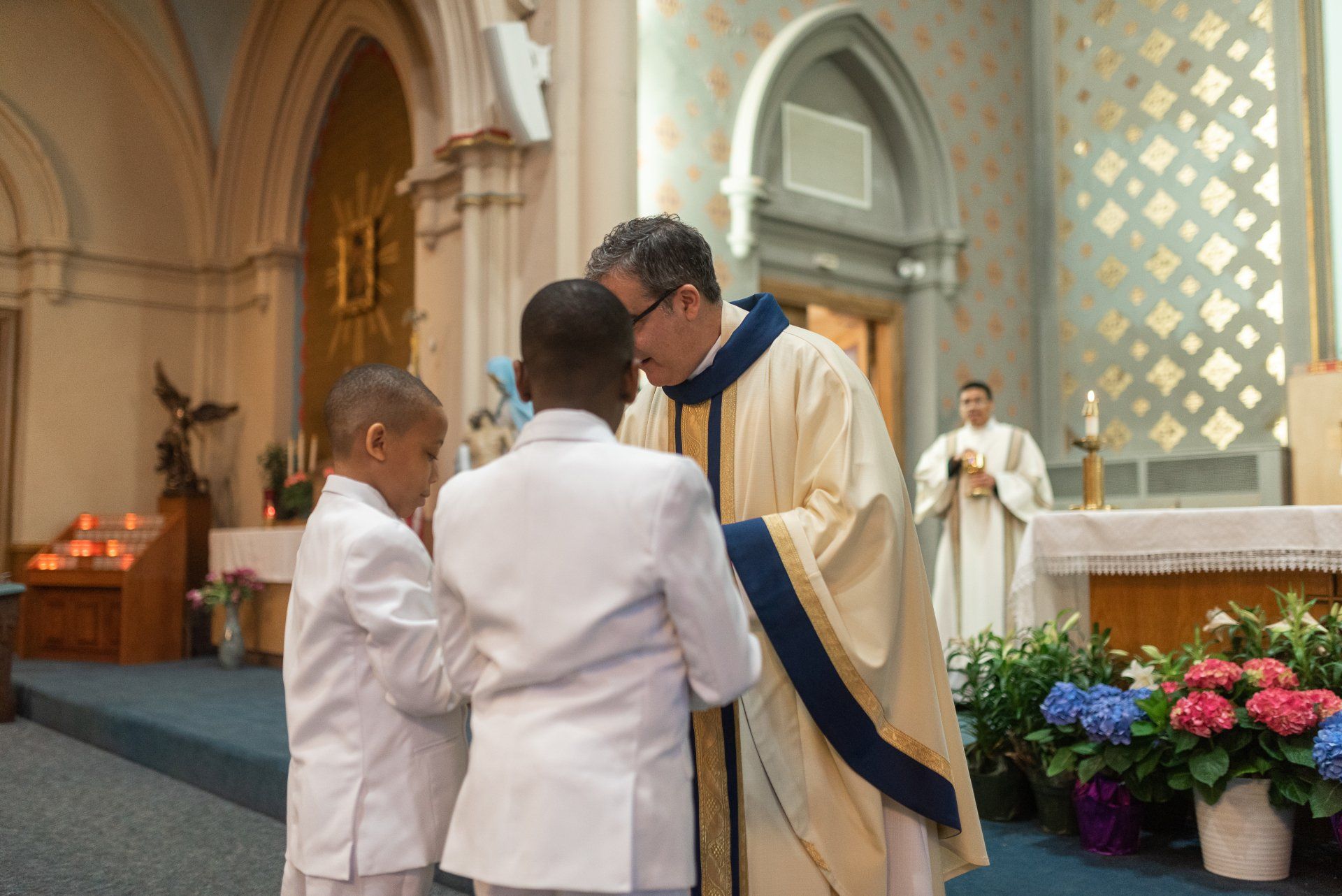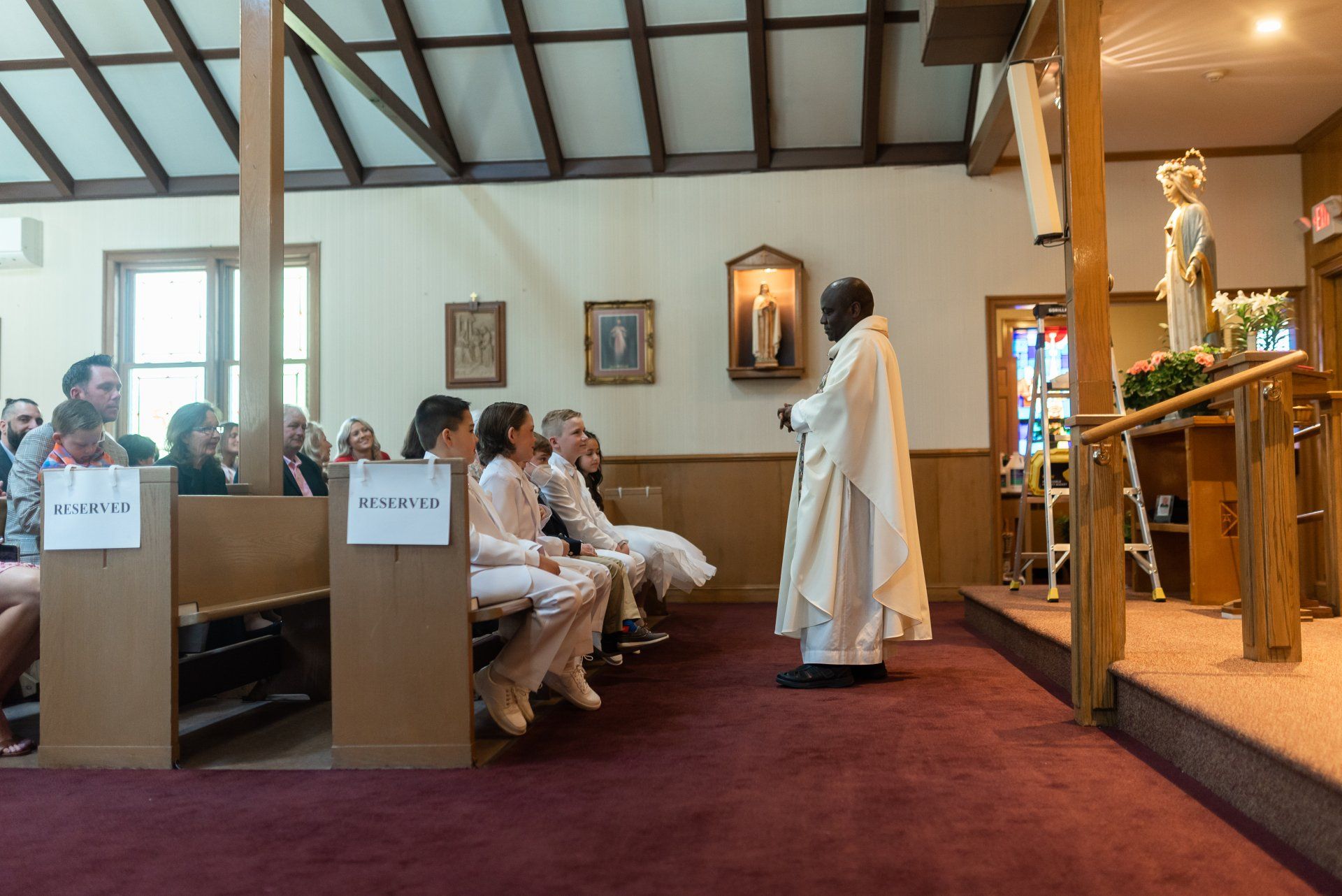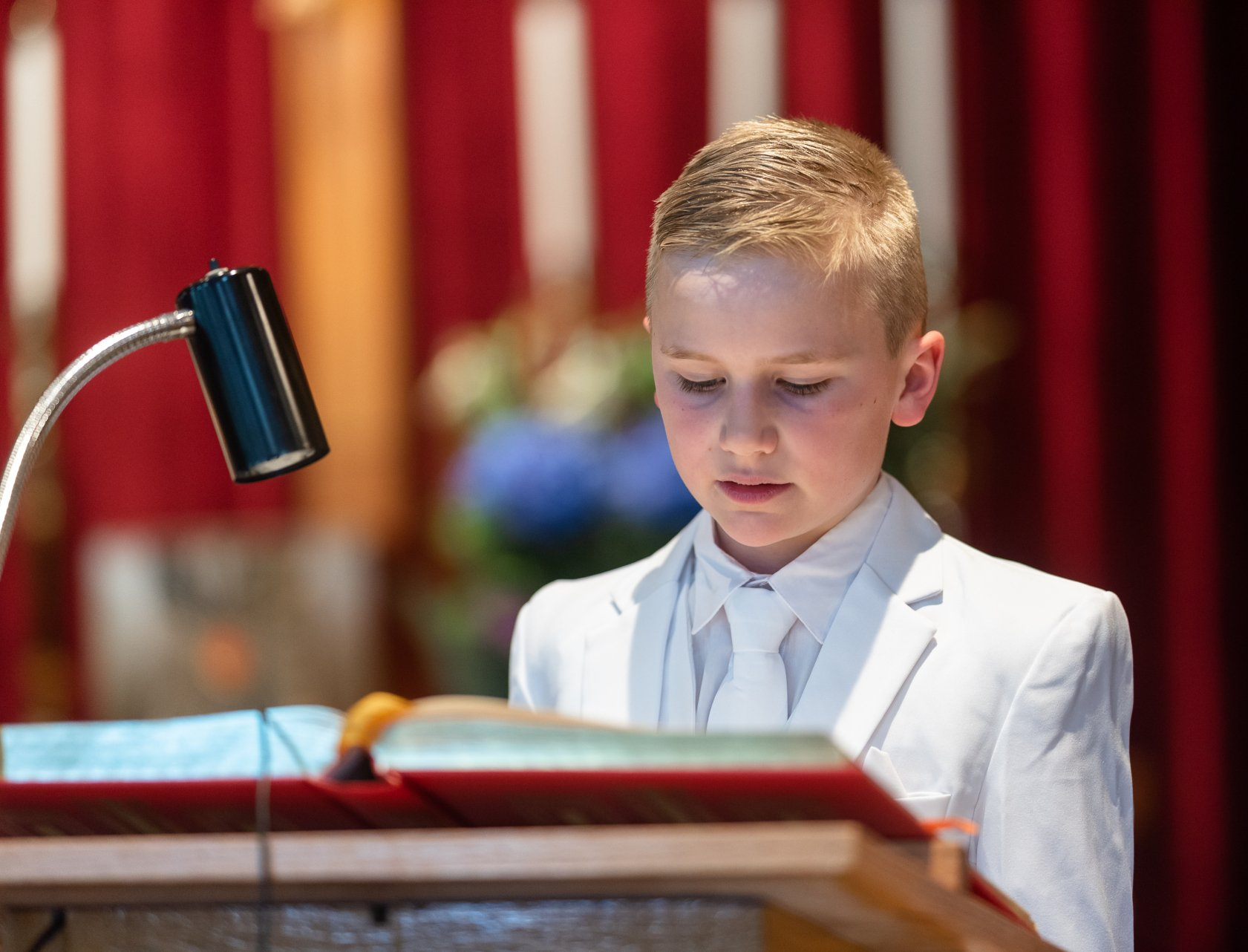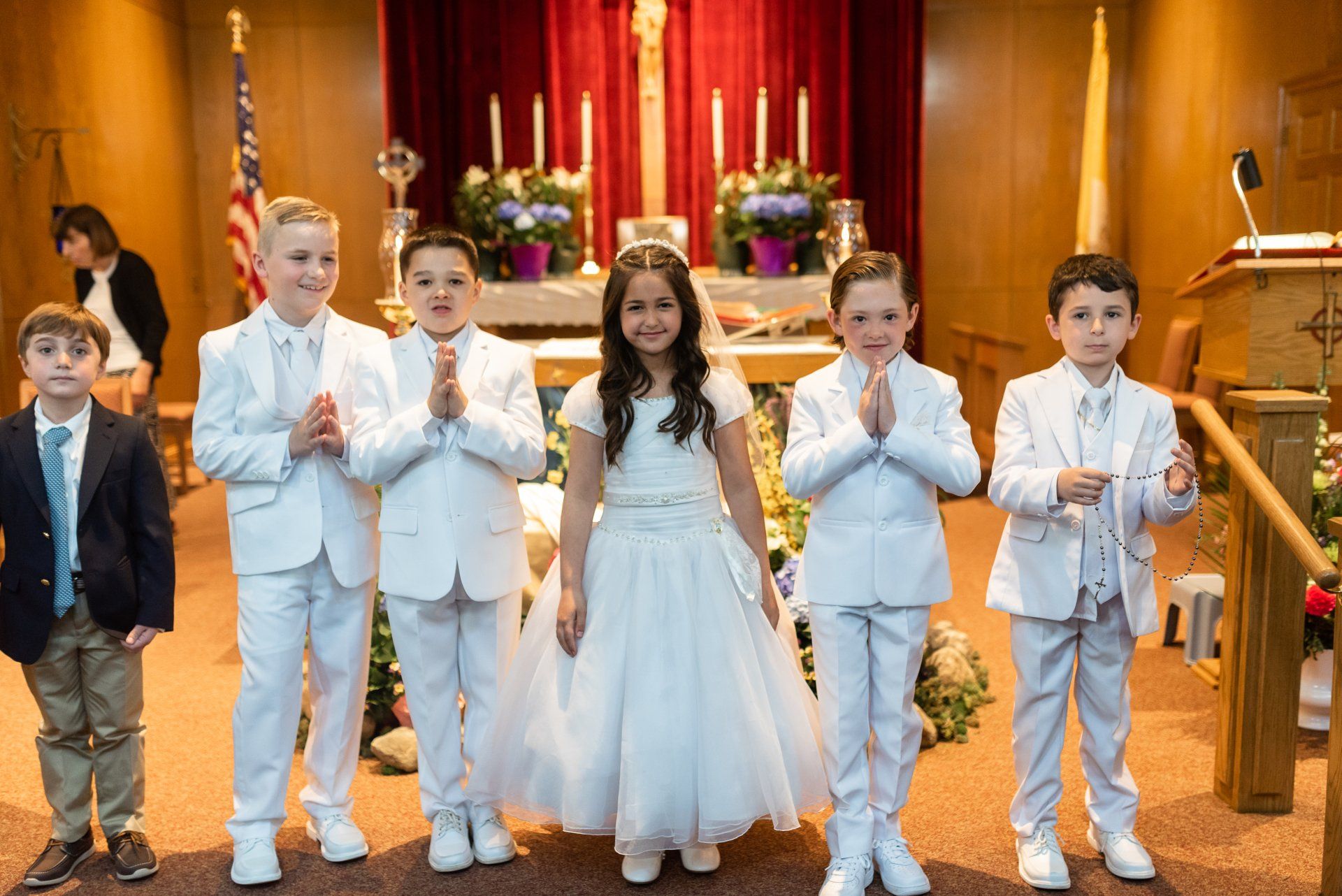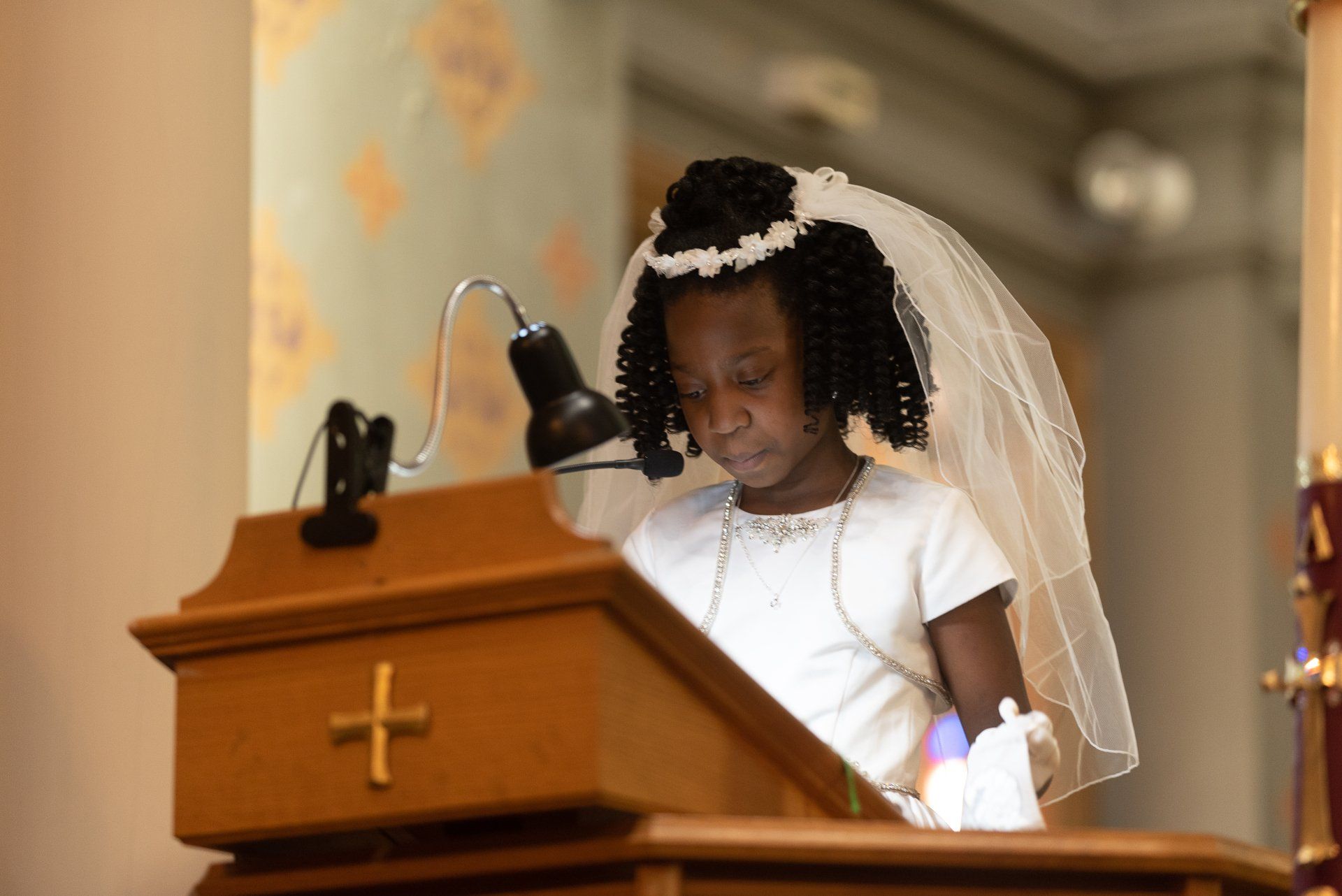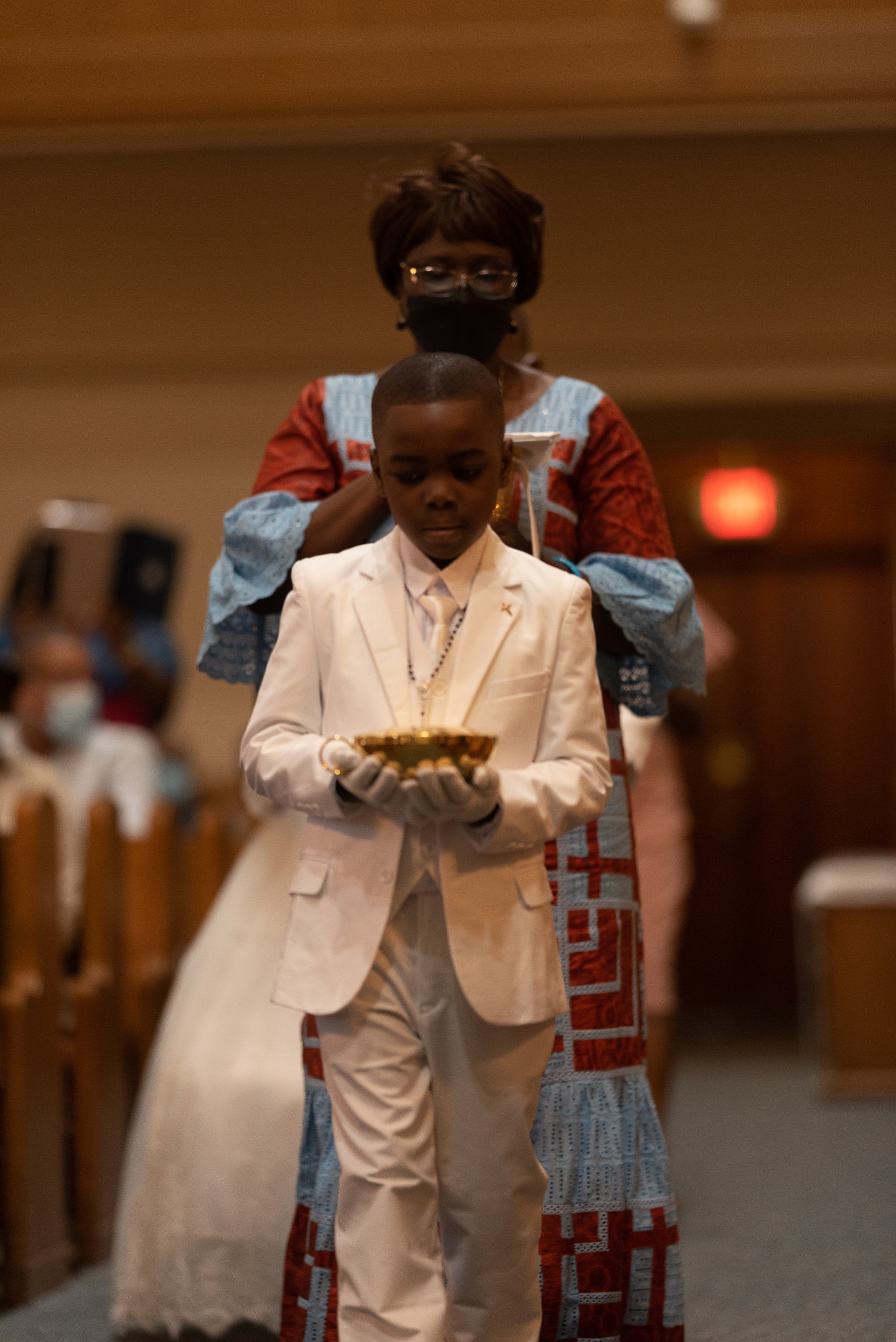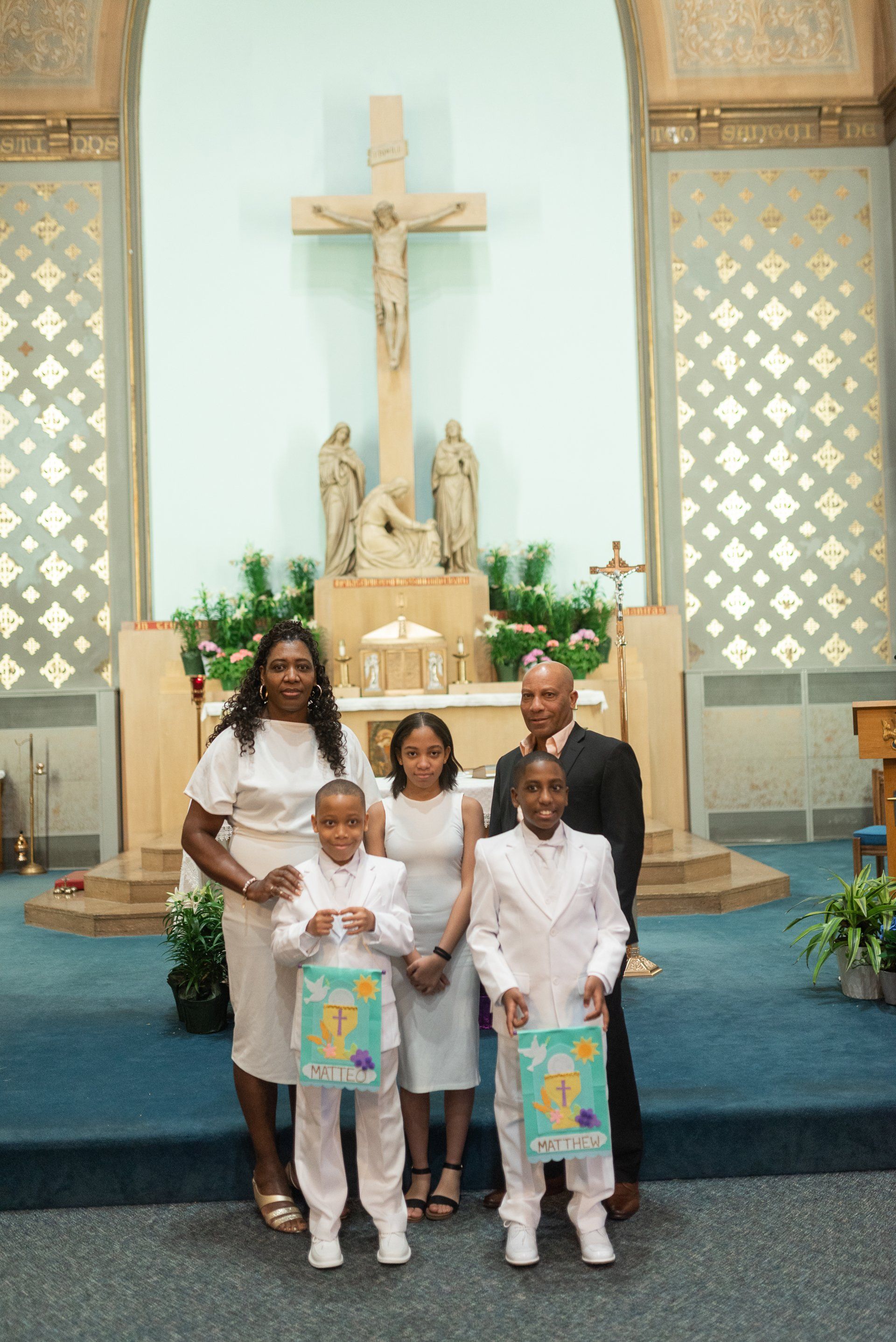Eucharist
The other sacraments, and indeed all ecclesiastical ministries and works of the apostolate, are bound up with the Eucharist and are oriented toward it. (CCC 1324)
The Sacrament of the Holy Eucharist
The word Eucharist comes from the Greek word meaning "thanksgiving." It is through the Eucharist, offered in the Mass and received in Holy Communion, that we give supreme thanks to our Lord Jesus Christ. Just as the life of the Church revolves around the Sacraments, so the Sacraments themselves revolve around the Eucharist. For this reason the Eucharist is also called "the Blessed Sacrament."
The Sacraments are signs that really accomplish what they signify. The Eucharist, therefore, is not simply symbol of the presence of Jesus; rather, we receive Jesus Himself, Who is really and truly present in the Eucharistic species, Body and Blood, Soul and Divinity. In the Mass the priest, through the action of the Holy Spirit and the grace granted by his ordination, transforms the essence of the offered bread and wine into the Body and Blood of Jesus (this is called transubstantiation).
In the Gospels and in Saint Paul's first letter to the Corinthians, we read that the Eucharist was instituted at the Last Supper. During the supper Jesus broke bread and gave it to His Apostles, saying, "This is My Body, that is for you." After the supper He passed a communal cup (calix) of wine, saying, "This cup is the new covenant in My Blood." This action was the fulfillment of the covenants in the Hebrew religion; what was prefigured in the Passover and the Day of Atonement was fully realized in the sacrifice of Christ--a sacrifice that continues to be offered in every Mass.
Receiving the Eucharist changes us. It both signifies and effects the unity of the whole mystical Body of Christ, to the Head and to all the members, and serves to strengthen the entire Church.
As children reach the age of reason--generally around age seven--the Church extends to them an invitation to receive the Sacrament of the Eucharist. The initiation into the Christian community that took place at Baptism is thus furthered by inviting the baptized to enter fully into the heart of Christian faith through participation in the Holy Communion. All persons who have received their First Holy Communion may receive the Eucharist at Mass throughout their lives, unless in a state of mortal sin.
In our Collaborative the Mass is offered every day, including multiple times on Sunday; see the Mass schedule page for times and locations. Additionally, Eucharistic Adoration is offered on First Fridays from 12:00-2:00 p.m. at Most Precious Blood Church.
On the weekend of April 30 and May 1, our First Communion students received their First Holy Communion. You can see photos of those Masses below. Photos are courtesy of Nicole Curran Photography. Check out the rest of the photos here.
What is Eucharistic Adoration?
Eucharistic Adoration, also known as Exposition of the Blessed Sacrament, is a custom of honoring the Holy Eucharist outside of Mass, by solemnly exposing the Sacred Host (i.e., the consecrated bread) to the view of the faithful, in order that they may pay their devotions before It, and also engage in prayer or meditation in the presence of Christ. Originating from the centuries-old custom of "visiting" the Lord at church tabernacles, paying devotion to the exposed Eucharist has become a liturgical act of worship in its own right.
Some parishes, such as those in our Collaborative have certain periods set aside for Eucharistic Adoration. Others may have a chapel or shrine set aside for perpetual Adoration, where the Blessed Sacrament is always exposed, 24 hours a day. In Boston, the designated Eucharistic Shrine is Saint Clement's Chapel on Boylston Street in the Back Bay. Additionally, our neighbor parish, Saint Mary of the Assumption in Dedham, offers perpetual Adoration in Saint Joseph's Chapel.
The New Covenant
I am the living bread that came down from heaven; whoever eats this bread will live forever;…Whoever eats my flesh and drinks my blood has eternal life and…remains in me and I in him. (John 6:51, 54, 56)
In the gospels we read that the Eucharist was instituted at the Last Supper. This is the fulfillment of the covenants in the Hebrew Scriptures. In the Last Supper narratives, Jesus took, broke and gave bread and wine to his disciples. In the blessing of the cup of wine, Jesus calls it “the blood of the covenant” (Matthew and Mark) and the “new covenant in my blood” (Luke).
This reminds us of the blood ritual with which the covenant was ratified at Sinai (Ex 24) -- the sprinkled the blood of sacrificed animals united God and Israel in one relationship, so now the shed blood of Jesus on the cross is the bond of union between new covenant partners -- God the Father, Jesus and the Christian Church. Through Jesus’ sacrifice, all the baptized are in relationship with God.
The Catechism teaches that all Catholics who have received their First Holy Communion are welcome to receive Eucharist at Mass unless sin a state of mortal sin.
Anyone who desires to receive Christ in Eucharistic communion must be in the state of grace. Anyone aware of having sinned mortally must not receive communion without having received absolution in the sacrament of penance. (CCC 1415)
The Church warmly recommends that the faithful receive Holy Communion when they participate in the celebration of the Eucharist; she obliges them to do so at least once a year. (CCC 1417)
Receiving the Eucharist changes us. It signifies and effects the unity of the community and serves to strengthen the Body of Christ.

